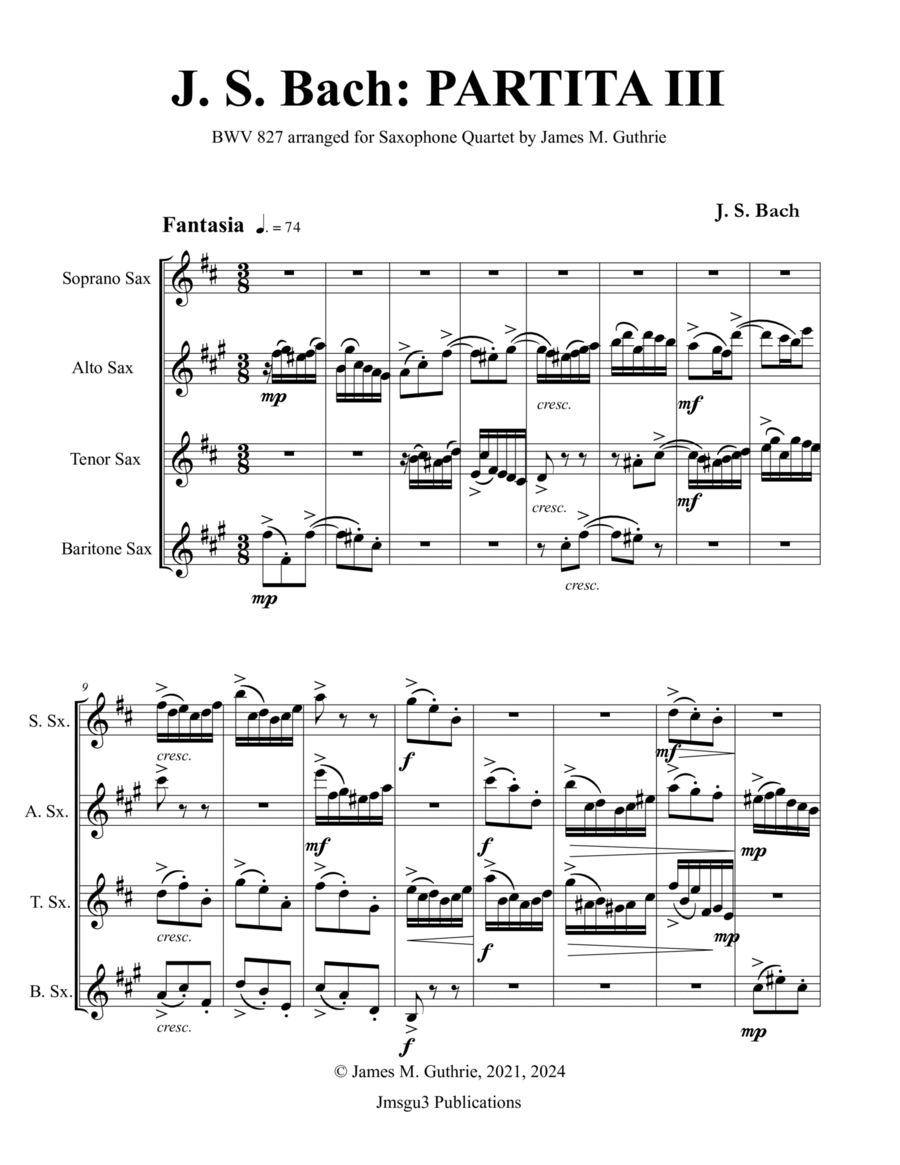Saxophone Quartet,Woodwind Ensemble Alto Saxophone,Baritone Saxophone,Soprano Saxophone,Tenor Saxophone - Level 4 - Digital Download SKU: A0.1431523 Composed by Johann Sebastian Bach. Arranged by James M. Guthrie. Baroque,Chamber,Contest,Festival,Historic,Standards. 70 pages. Jmsgu3 #1011997. Published by jmsgu3 (A0.1431523). BACH: Partita No. 3 BWV 827 Contents: Fantasia, Allemande, Courante, Sarabande, Burlesca, Scherzo, Gigue. Bach's Partita No. 3 in A minor, BWV 827, is an essential work in the composer's output for keyboard instruments. Here are some key points about this piece: It is one of the six partitas that Bach composed for harpsichord or clavichord, regarded as pinnacles of Baroque keyboard music. The Partita No. 3 consists of seven movements following the traditional partita structure: Allemande, Corrente, Sarabande, Burlesca, Scherzo, Gigue. The Burlesca movement is particularly notable, featuring rapid hand-crossing and a lively, humorous character unusual for Bach's works. The Sarabande movement is considered one of Bach's most profound and expressive, with its rich harmonies and emotional depth. The final Gigue is a tour de force of contrapuntal writing, with multiple melodic lines interwoven in a lively dance rhythm. With the other partitas, BWV 827 demonstrates Bach's mastery of various dance forms and his ability to elevate them into profound artistic statements. So, in summary, Bach's Partita No. 3 stands out for its structural complexity, emotional range, and virtuosic demands, cementing its place among the composer's most outstanding keyboard achievements.
